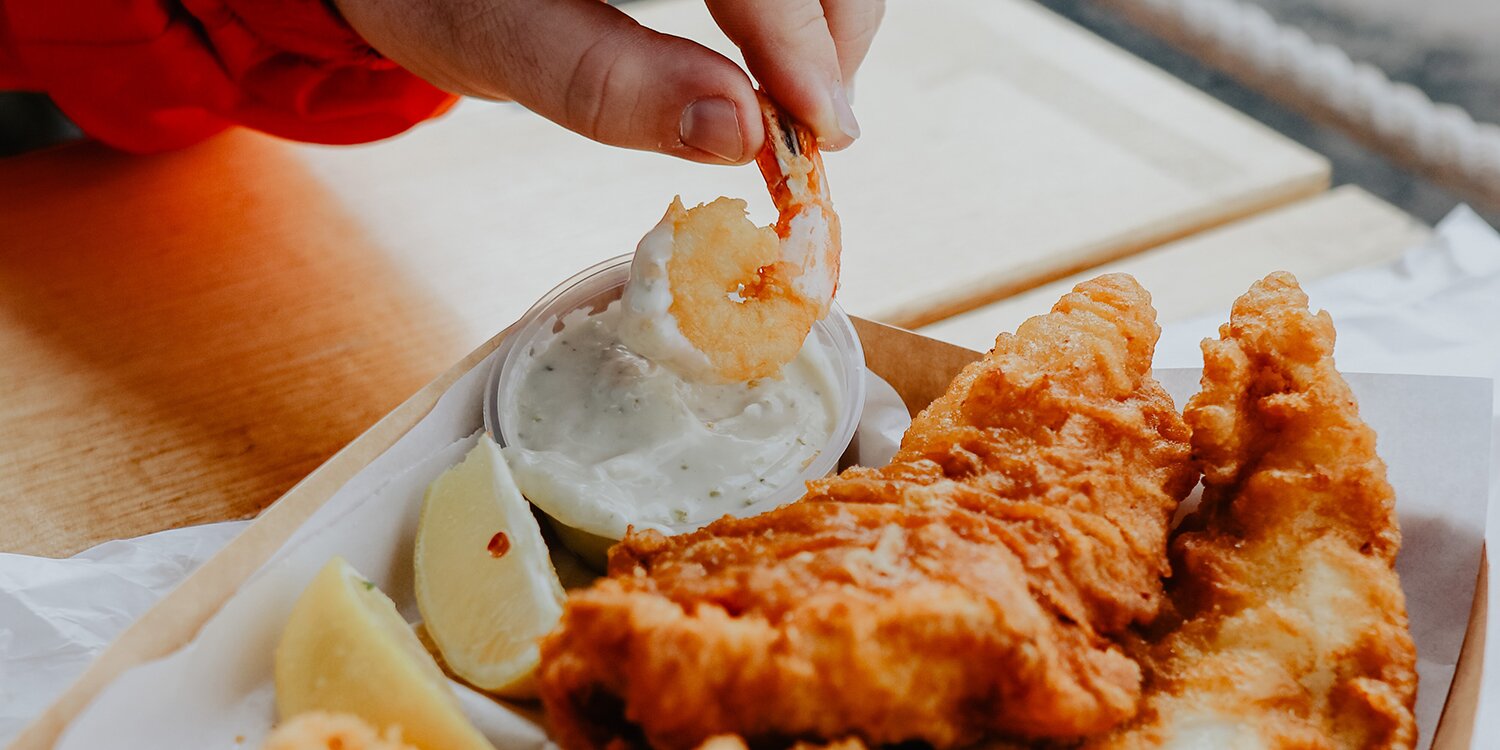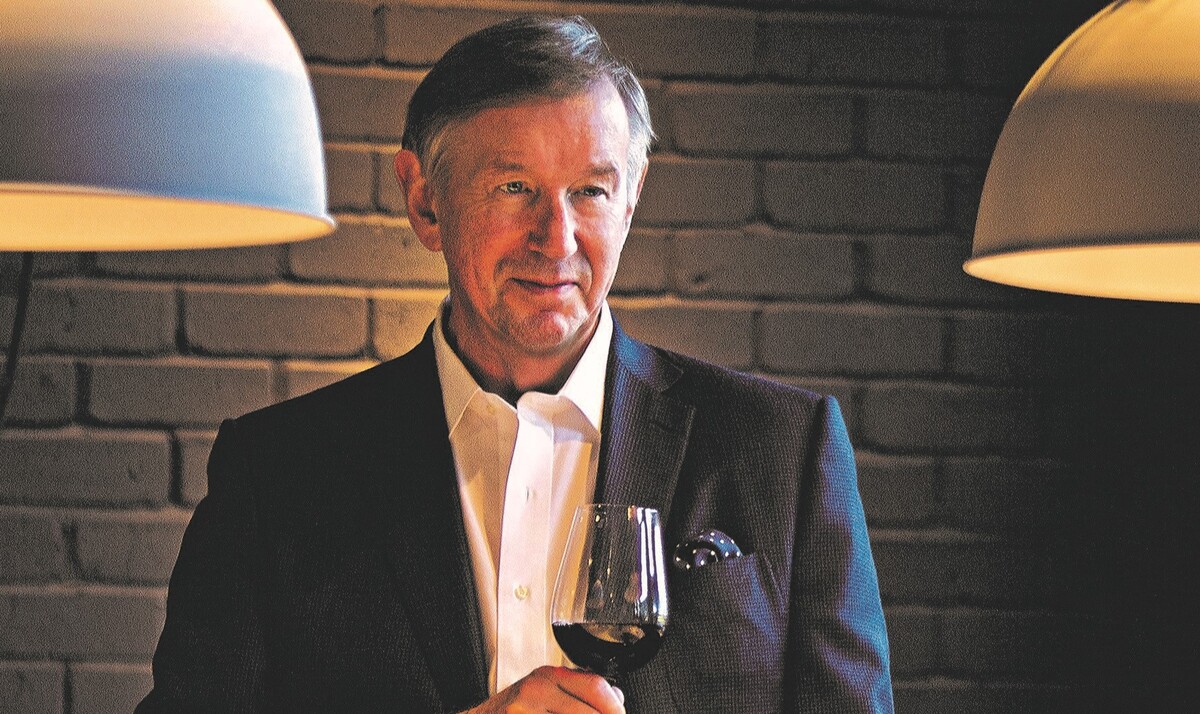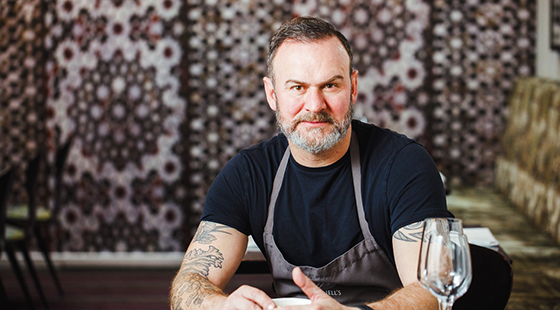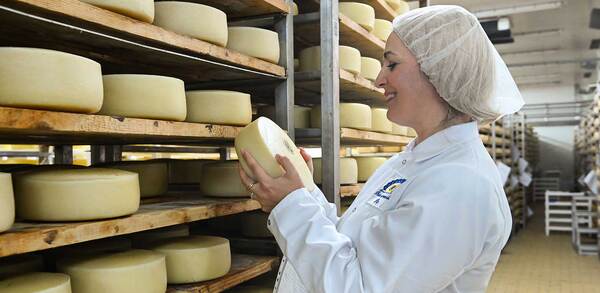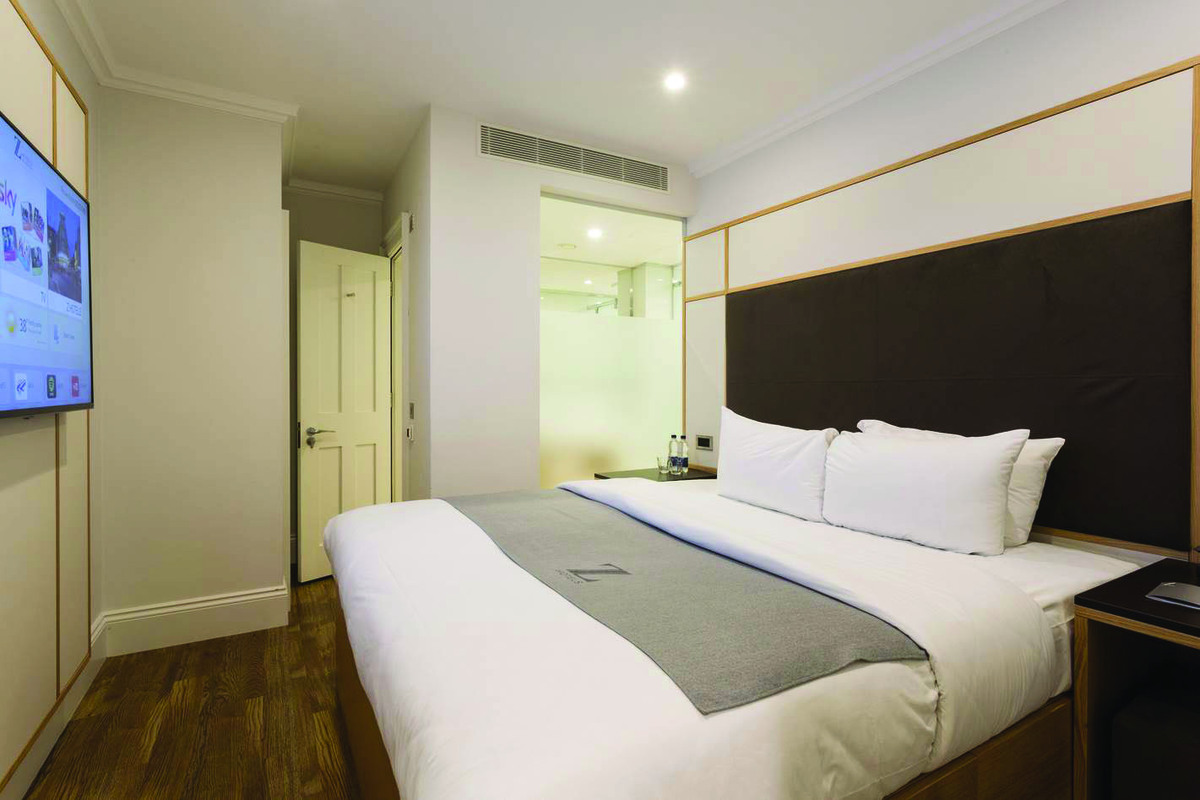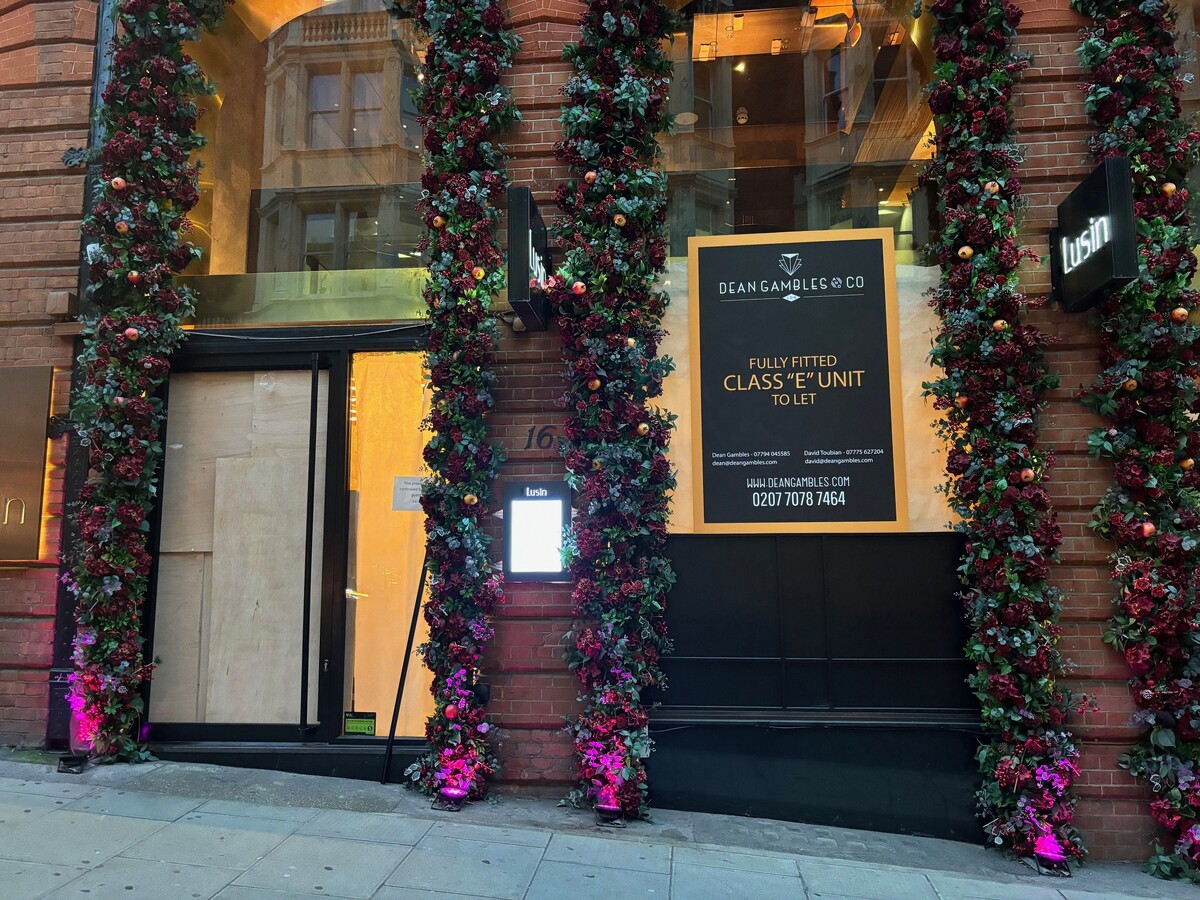Meet the new cod on the block
Getting ahead in fish and chips means offering something different – whether that’s curried fish served in naan bread or super-crunchy chips with Louisiana seasoning. Will Hawkes gets some fry-day inspiration
If you ask Kiran Kaur, co-owner of the Kineton Chippy in Warwickshire, the key to running a successful chip shop, she doesn’t miss a beat. “We always put our customers first,” she says.
It’s an admirable approach, and more essential now than ever. Fish and chips are just one of multitudinous options on the modern British high street, and businesses like that run by Kaur and husband Sukhpreet Singh have to be nimble to stay on top. That means offering gluten-free batter, being open at awkward hours, and options on the menu that reflect how British tastes are evolving and broadening.
This could include dishes such as masala fish, which takes Britain’s favourite supper and elevates it using a variety of spices common in Indian cuisine: coriander seed, turmeric, cumin, fenugreek and more.
“It’s very popular – it’s fusion [food],” Kaur says. “You can have the fish in naan bread or in a tortilla wrap, or you can have it on its own served with our homemade chilli and garlic sauce. It’s great for when someone wants something a little bit different.”
This open-minded approach is increasingly common in the world of fish and chips. In November, the Norwegian Seafood Council and the National Federation of Fish Friers (NFFF) hosted a round-table event, ‘The Future of Fish & Chips’, at the Wetherby Whaler in Leeds. Among other “key takeaways” were a commitment to explore changing consumer habits, share best practice and “take inspiration from others in the industry”.
“It was clear from the comments in the room that everyone was focused on future-proofing the industry and what they could do to make a difference,” says Victoria Braathen, UK director for the Norwegian Seafood Council. “There was also a welcome desire to celebrate the incredible community that has crafted the fish and chip industry that we know today.”
Custom made
In many ways, the Kineton Chippy, established as a chip shop for 60 years, is typical of modern chip shops. Set in a humble, one-storey structure close to the heart of the handsome village of Kineton – population just under 2,500 – it offers the traditional favourites (cod, haddock or plaice) as part of a wide-ranging menu, taking in pretty much anything anyone could expect to find in a chip shop, from battered cod to chips in naan with cheese.
It’s an approach that has won them plaudits, such as a Good Food Award in 2020, and that is based on Singh’s 23 years of chip shop experience – before Kineton, he co-owned a chip shop in nearby Leamington Spa. It means he and Kaur, who have owned the Kineton Chippy for eight years, have a good handle on how customer demand is shifting in the world of fish and chips.
“People have so many more options now when it comes to enjoying fish,” says Kaur. “You can get fish from the Chinese or fish and chips from the pub, but I don’t think they have the same quality. And social media is so important now. It used to be that people would go to the chip shop down the road, but now they have to promote themselves on social media.”
That acknowledgment ties into the business’s wider philosophy, which is about making sure customers get exactly what they want. Kaur offers their approach to allergens as an example of how they do things. “We use a lot of ingredients that can cause an allergic reaction, so we ask customers to tell us if they have an allergy. It’s the same with gluten – let us know over the phone and within 30 minutes we’ll have [your gluten-free meal] ready.”
Scran-tastic
As Kaur points out, social media is a hugely useful tool for telling customers what you offer, but it’s also how British consumers have been exposed to all sorts of different options. One of social media’s biggest breakouts hits in 2022 was Footy Scran, a twitter account that has attracted half a million worldwide followers with pictures of football-ground food.
Much of the food is from the UK, but there are also plenty of entries from Asia, the US, South American and continental Europe. One of the most popular submissions is buffalo fries, an American invention which leans heavily on the use of hot sauce, among other ingredients.
It’s a clear sign that tastes are changing: spice is in, and the old fish-and-chip standbys – vinegar, brown sauce, ketchup – are starting to look a little forlorn. For chip shops that want to experiment, though, there are plenty of options out there, including gluten-free chip seasonings from Middleton Foods, which come in three flavours: piri piri, smokey or Chinese salt and chilli.

“The option to sell chips with toppings is another great, creative way for chefs to offer something which sets them apart from their competition,” says Paul Stanley, foodservice manager at Middleton Foods. “Palates and consumer expectations are changing, and this style of offering on a menu can really help captivate consumers and encourage them to try something different. Chips as we know and love them have been somewhat transformed thanks to our friends across the pond.”
Stelios Theocharous, managing director at Ceres, agrees. “Fish and chips is a traditional meal and, as much as we hate to say it, the straight-up cod and chips/haddock and chips generation is getting older,” he says. “It’s why we’ve developed Ceres Louisiana Seasoning, which champions those iconic American flavours while turning up the heat on traditional fish and chips.
“We’ve got customers sprinkling it over freshly cooked chips, mixing it with mayonnaise for a dip, using it as a rub or marinade for fish, and shaking it over fried king prawns.
It’s an approach that is as much at home in high-end cooking as it is on the humble frying range. Chef José Pizarro, also a Seafood from Norway Ambassador, says: “I opened my pub in Esher simply so I could put fish and chips on my menu – I love this dish and it remains a best seller, keeping my customers coming back for more. The British food scene is constantly evolving so it’s incredibly important that as chefs, we offer a menu that reflects this.
“Simple twists to premiumise iconic classics such as adding smoked sweet pimento to your batter to coat sustainable Norwegian cod or haddock, and chopped guindilla peppers to your tartare sauce, are both simple and low cost, yet pack a punch when it comes to flavour and menu engagement.”
Free-from frying
High-quality ingredients are as important as ever. Pacific NorthWest Seafood suggests operators try Pacific hake, a sustainable option that has “rich, white flesh, flaky texture, and mild and slightly sweet flavour,” while Aviko offers Super Crunch Chunky Fries. “Not only do they have a delicious crispy coating, [they have] a longer holding time too, which means they’re perfect for delivery and takeaway, ensuring the highest quality and taste for your consumer,” says Mohammed Essa, commercial director for UK and Ireland at Aviko
Those keen to follow in Kineton Chippy’s footsteps in offering gluten-free options may be interested in KFE’s Kiremko frying ranges. “Kiremko frying ranges can be fitted with stainless steel divides and separate filtration, providing a dedicated pan to safely fry fish and chips for those with dietary requirements,” says Paul Williams, managing director. “Dedicated hot boxes can also be built in so that only oil from these fried products drains back into the free-from pan.”
Direct Seafoods, meanwhile, is all about fresh, sustainable fish. “If you can find MSC-certified cod, haddock, hake or coley, and you have an MSC chain of custody, then adding the eco label to your menus is a great way to tell your customers you’re sourcing sustainably,” says Natalie Hudd, director of sales at Direct Seafoods. “Answering questions about provenance, how it was caught and the journey it has taken is a fantastic indicator of how fresh it is and will certainly appeal to the 34% of fish eaters who want to see more sustainably sourced fish.”
Victoria Braathen, UK director of the Norwegian Seafood Council, agrees. “As diners become more aware of how their consumption impacts the environment, they are becoming more selective about what they buy and how often,” she says. “Explaining the provenance of the fish being served is just one way of adding value to a dish, giving diners an understanding of why what they are eating not only tastes great, but is sustainable too.”
Sustainability is another way in which the Kineton Chippy, which is MSC-accredited, makes sure customers get what they want. Nothing is left to chance; every detail is tackled, right down to the state in which the fish enters the fryer. “Most of our fish here is cooked to order,” says Kaur. “We do haddock with the skin on, and cod with the skin off, but it’s no problem to do the haddock without skin. We want to give our customers the best fish possible.” That’s a sentiment that everyone in the trade could agree with.

Aviko www.aviko.co.uk
Ceres www.worldofceres.com
Direct Seafoods www.directseafoods.co.uk
KFE www.kfeltd.co.uk
Middleton Foods middletonfoods.com
Norwegian Seafood Council en.seafood.no
Pacific Northwest Seafood www.pnwseafood.net


